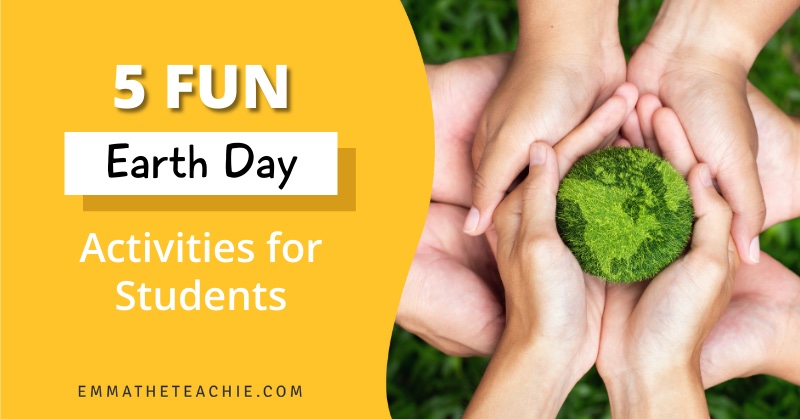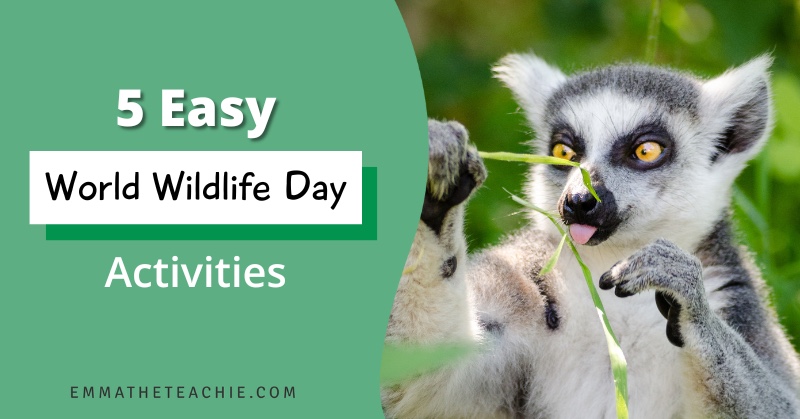
5 Easy World Wildlife Day Activities
Every year on June 5th, the world observes World Wildlife Day. This day was created in 2007 to raise awareness about the importance of wildlife conservation.
World Wildlife Day is an excellent opportunity for our students to learn about the various species that share our planet and the issues they experience. There are numerous classroom activities that can be used to celebrate and honor World Wildlife Day.
These activities can help kids learn about various animals, their habitats, and the threats they face. They can also help students develop empathy for animals and a commitment to wildlife protection.
And… who doesn’t love learning about different animal species?
I know my students do!
We will explore five classroom activities for World Wildlife Day.
- Create a wildlife documentary
- Host a wildlife fundraiser
- Go on a field trip
- Organize a wildlife art show
- Design a wildlife conservation plan
These are perfect for middle school life and high school science classrooms, but could also work for the littles in elementary with some extra support!
I hope you feel inspired to use World Wildlife Day to teach your students about the importance of animal protection and conservation.
Let’s go!

1 – Create a wildlife documentary
I know that my students love any opportunity to get in front of a camera.
And… No… I don’t mean the latest Tik Tok dance that has gone viral.
A great way to celebrate World Wildlife Day is to have students create a wildlife documentary. Writing and editing a wildlife documentary will help students learn about animals and the problems that they face. Students can also use the videos to help raise public awareness about these threats and inspire people to take action to protect animals.
To get started, you can assign students into groups or allow students to choose their groups. You can then assign students an animal to research or let them pick.
Then, students can begin their research. Students should research the basic facts about the animal, such as its habitat, eating habits, and environmental threats that it faces.

If you want to take it a step further, you can require students to interview experts in the wildlife field about conservation and protection efforts. I’m sure that local zoos would love to facilitate this!
After students have gathered all of the necessary information, they can let their creative side shine!
Students can film certain parts, such as interviews or talking points, and use stock video for others, such as footage of the animal if it is not local.
Once the documentaries are completed, you can facilitate a World Wildlife Day assembly or a specified time where other students can watch the documentaries.
Want to make it more interesting?!
Make this into a contest! Have students vote on which documentary was the best!
This is one of my favorite World Wildlife Day activities – it really lets students use their creativity, and the results are amazing!
Happy filming!
2 – Host a wildlife fundraiser

Another way to celebrate World Wildlife Day is to organize a fundraiser for wildlife!
A wildlife fundraiser would be an excellent activity for a classroom to improve the lives of animals. It’s also a way to get the community involved in learning about wildlife protection.
Once you and your students have decided to plan a fundraiser, the first step is to brainstorm ideas. Students will need to brainstorm what kind of fundraiser they want to have and how they will go about making it happen.
Your students would have so many ideas about what kind of fundraiser to have. Some of the possibilities include a bake sale, a lock-in, which is an overnight event where students are “locked in” the gymnasium of the school, a school dance where the admission price is a donation for wildlife, a talent show, and so many more!
After you have the idea in place, students need to plan the fundraiser and decide how it will be best promoted among the school and community members.
Then, it will be the day of the fundraiser before you know it! Students will love the feeling they get helping to raise money for a good cause. After the money is raised, you can make sure the funds get to the conservation organization of your choice!
I would love to hear what type of fundraiser you decided to host and how successful it was.
Now… don’t be surprised when this becomes an annual event due to its popularity!
3 – Go on a field trip
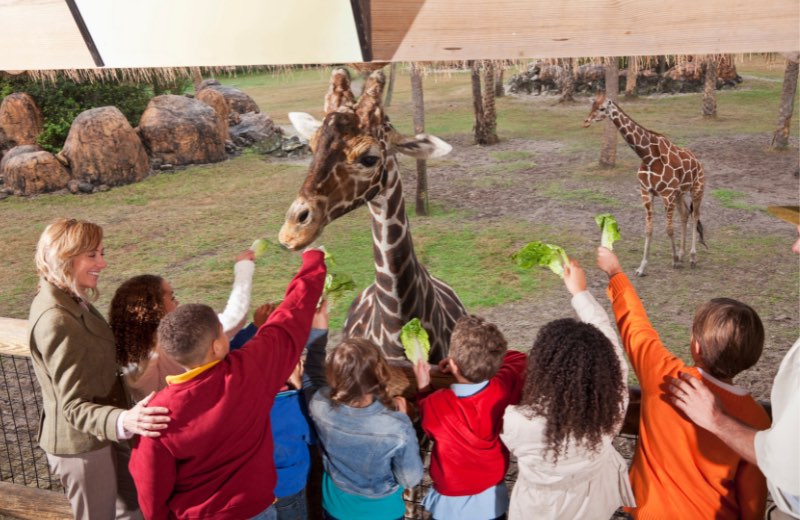
Who doesn’t love a field trip?
I don’t see any hands raised, which is what I thought!
A field trip is a great way to learn about wildlife conservation in your own backyard. Students should work together to research local wildlife habitats and various conservation efforts that are going on.
As students are working on their research, you can work to facilitate a trip to a local location where students can observe real-life examples of wildlife and habitats.
On the day of the field trip, students should bring:
- binoculars
- cameras
- magnifying glasses
- notebooks
Students will use these tools to observe and record what they are seeing in person. In order to fully appreciate their surroundings, students can take nature walks, observe the various animals, and record any relevant data.
As students are working, it is important for you to interact and engage with them. You can ask students questions to tap into their critical thinking and ensure they are on track with the assignment and objective of the field trip.
Once you are back in the classroom, it is important to debrief with the students about the day. Students can discuss what they have learned and what kind of efforts can be made to help conserve the local wildlife and habitats. This can also be a time to assess students and make plans for any follow-up field trips.
4 – Host a wildlife art show
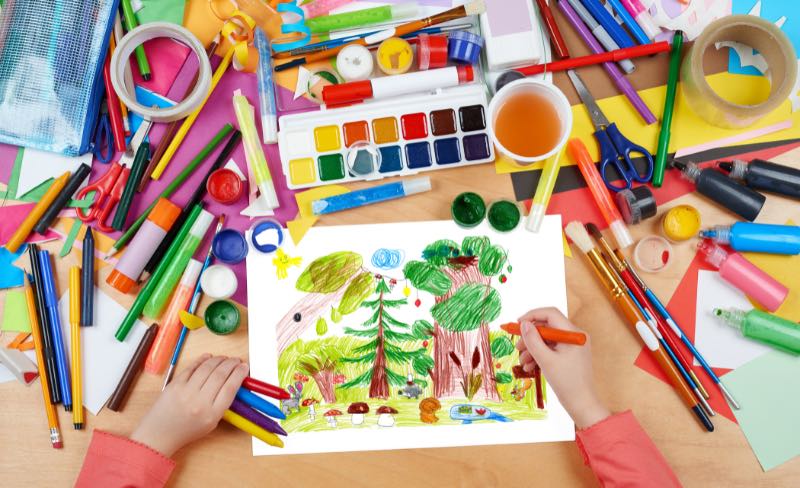
The third activity to honor World Wildlife Day includes hosting an art show all about wildlife.
I love the idea of this activity for two major reasons.
First, you are incorporating art into science, which can engage all learners, even those who struggle with science or are not interested in science.
Second, this activity can also serve as a fundraiser for conservation efforts!
Students can use their creativity to express their ideas and feelings about wildlife conservation. Allow students to express their creativity through a variety of mediums, such as pottery, markers, paint, watercolors, or whatever a student prefers.
You will be amazed at what students are able to create and how meaningful their pieces of art can be.
Once you have a venue and a committed number of artists to produce samples for the art show, it is time to promote! Be sure to promote your art show throughout the community and invite everyone to come.
On the night of the show, you can charge a small admission as a donation for a conservation group, and/or you can also organize a bake sale for extra fundraising efforts.
Overall, organizing a wildlife art show is a creative and unique way to raise awareness of wildlife conservation.
Don’t have the time or ability to run it as a fundraiser? You can also make a hallway display out of their artwork, increasing wildlife conservation awareness within the school.
5 – Design a wildlife conservation plan
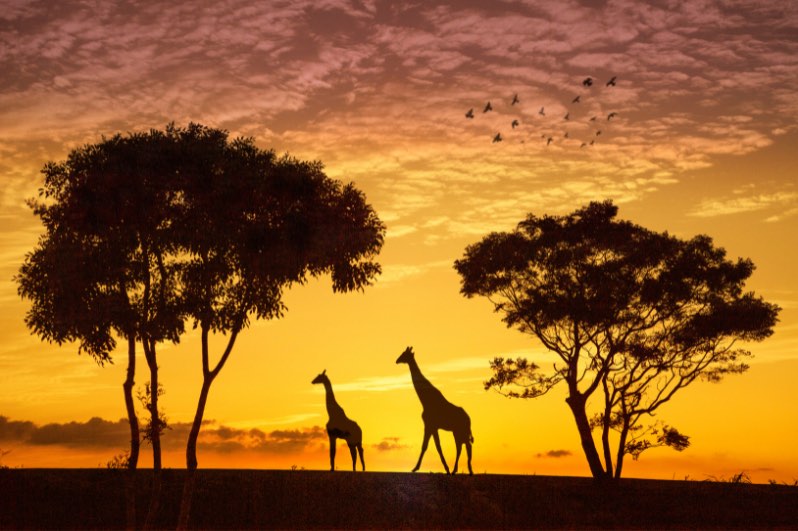
The last activity that students can do to celebrate World Wildlife Day is to design a conservation plan. By designing a plan, students can learn about environmental and outside influences on wildlife and how they affect different species.
- Students will begin by choosing an animal or habitat that they would like to learn about protecting. Once the threat is identified, students should research and create a plan to help conserve the animal and its habitat. Some conservation efforts could include creating protected areas, reducing pollution, and public education.
- Next, students should develop a timeline of implementation. It is important for students to understand that change doesn’t happen overnight. The efforts will take time, so students should create small and manageable time frames for conservation efforts to realistically happen.
- In addition to a timeline, students should also create a budget for their conservation ideas. Students will need to realize just how expensive conservation efforts can be and how difficult it can be to raise funds.
Want to take this assignment a step further?
- Have students create a model of their wildlife habitat. They could create a model of what the habitat currently looks like, so the before, and then create what they think the habitat will look like after their conservation methods are implemented.
It is so interesting to see the students’ perspectives on how their efforts will be seen!
Which World Wildlife Day activities will you use?
I hope you have found these World Wildlife Day activities helpful and that you can implement one or two into your own classroom!
These are a perfect end of year activity. If you need some more ideas for how to finish the school year strong, check out my blog on 6 exciting end of year biology activities.
Many times, students are asked about what they would do to help conserve wildlife, but it is not very often that they are asked to apply and implement their changes.
Projects like these can help students realize they can contribute to building a better future for all animals!
If you use any of these ideas, I would LOVE to see it in action! Tag me @emmatheteachie or send me a photo by replying to any of my newsletters – that would be so cool!
I hope you have a wonderful World Wildlife Day,
